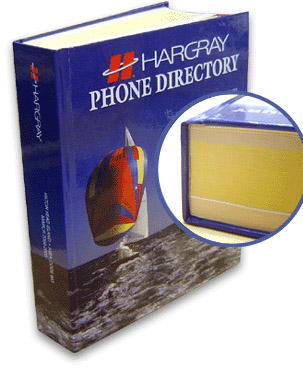Sewn Case Binding
 Description
Description
Sewn case binding, also known as "edition binding", is the most expensive binding method, but is the most durable. A book bound with a stiff, hard cover that is covered by fabric or other material.
In sewn case binding, most often used in book production, a minimum of 60 printed sheets are folded into 16 or 32-page signatures, which are collated and sewn by machine.
The sewn edges are coated with glue. Then a strip of gauze adheres to the document's spine. Finally, the book and its covers are placed in a casing-in machine, which pastes the endpapers and fits the cover.
A large printed sheet containing 16 or 32 individual book pages, called a signature, is cut, folded, and assembled in the correct page order.
The signature is sewn together with other signatures.
Endleaf papers, which are usually made of heavier stock than the other pages of the book, are glued to the outside of the first and last signatures.
The book is trimmed on all sides except the sewn binding side.
The sewn edge (spine) of the book is coated with glue.
The spine of the book is rounded in a special machine to allow the cover of the book to function properly when it is attached to the pages.
A strip of gauze is wrapped around the spine of the book.
The cases (covers) that will be used for the book are made from heavy board stock with its grain running parallel to the spine of the book, which prevents warping of the cover. The heavy board cases are wrapped with embossed paper, cloth, plastic coated material, leather, or a variety of other materials (occasionally a combination of materials) to form the final book covering.
The book is attached to its hard case/cover on a casing-in machine, which glues the endleaf papers to the case.
The final step is to insert the book into a hydraulic press to ensure that it dries properly and does not warp.
 Description
Description

